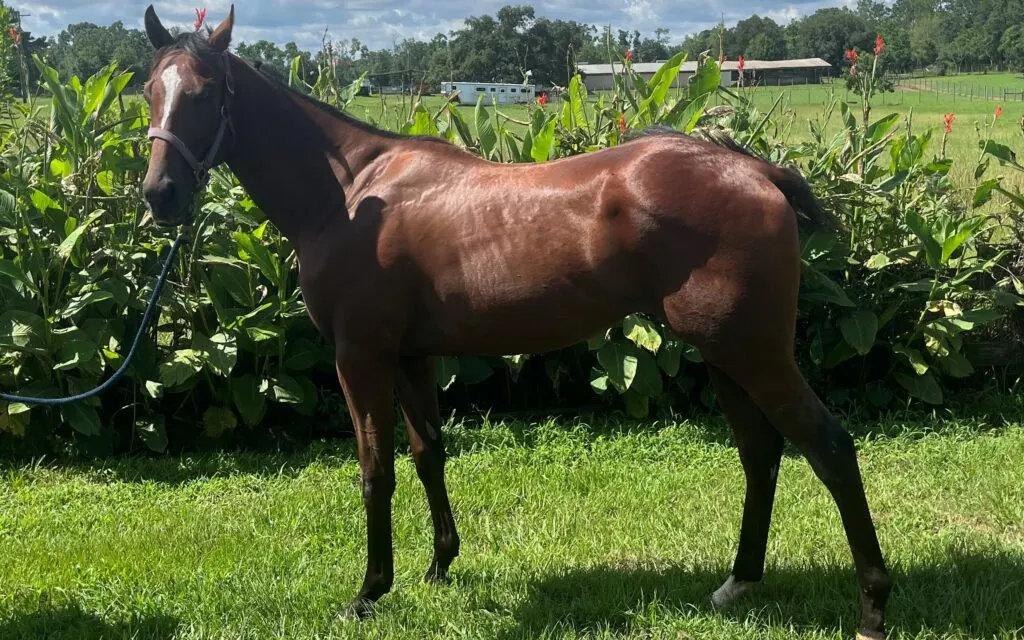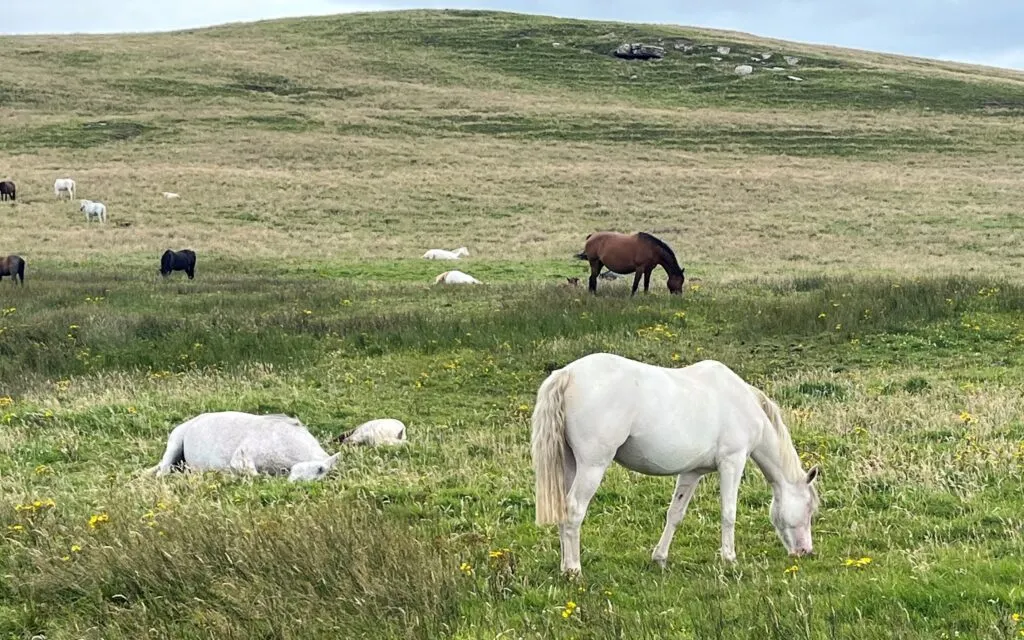Last updated: October 9, 2023
Regardless of when a racehorse is born, they all have the same birthday, January 1. Relegating all horses to the same date of birth is strange, but surely there must be a rational reason, so I decided to discover why thoroughbred racehorses have the same birthday.
Thoroughbred racehorses have the same birthday to make it easier to keep track of horses’ ages. The birth date is set to coincide with the animals’ breeding cycle and is the reason horses’ birthdays are different in the Northern Hemisphere and those in the Southern Hemisphere.
Many racehorse owners accept January 1 as the birthday for horses without giving it much thought. However, horses’ birthday and their ages have an interesting role in horseracing.

Birthdays and Thoroughbred racehorses.
It doesn’t matter what day a Thoroughbred horse is born; it will be considered a year older on January 1st. Setting a standard birth date for racehorses makes it simple to determine its acceptability for races based on age.
Northern hemisphere v. Southern hemisphere
All Thoroughbred racehorses have the same birthday unless they live in different hemispheres. Horses born in the Northern Hemisphere are considered born on January 1st, and horses born in Southern Hemisphere celebrate their birthday on August 1st.
The difference in birth dates is based on the mare breeding cycle, which is affected by the seasons. In the Northern Hemisphere, mares typically start coming into heat shortly after the new year.
A horse’s gestation cycle typically runs eleven months, so that means most foals are born in the spring, making January 1 a practical choice for their common birthday.
At the beginning of September in the Southern Hemisphere, it’s just starting to warm up, prompting mares to begin their estrus cycle or come into heat.
So they are more likely to deliver foals in late August to November, which makes August 1 a logical choice for horses’ common birthday in countries in the Southern Hemisphere.
Countries in the Southern Hemisphere set their racing schedule the opposite of countries in the Northern Hemisphere. So they typically use August 1st, which is practical for their racing season.

Why is an early birth important?
Think about this: if a horse is born on December 1, 2021, it will turn one year old on January 1, 2022, just one month later, and is eligible to race in competitions for two-year-olds at only thirteen months of actual age.
Of course, horses mature fast, but it’s unreasonable to believe a thirteen-month-old can be competitive in races against a horse twenty-four months old.
Because of this, it’s crucial that owners breed their broodmares to deliver foals as close to January 1st as practical. The month the horse is born is essential when you are choosing a yearling to race as two or three years old.
I recently brought a friend with me to this year’s yearling auction. He was amazed at the different sizes of the horses. Some looked fully grown, while others looked like yearlings. The difference is attributed to the month of their birth. For this reason, I typically avoid buying horses born after April.
I wrote an article all about Thoroughbred breeding practices. I recommend you read it if you’re interested in the topic.

The tradition started in England.
Before racing was formalized, owners pitted their horses against one another without regard to age, and most were over four years old. But as more people bred horses specifically for racing, they started matching horses as two and three-year-olds.
During these early days of horse racing, the English didn’t race in the winters and only rarely in the spring, so the owners decided on May 1st as a standard birth date.
The standard birthday made it easier to match two and three-year-olds against each other. However, by 1834 racing of younger horses grew in popularity and the Jockey Club, headquartered in New Market, declared all horses racing under their jurisdiction born on January 1.
This new rule wasn’t accepted wholly, and in some regions of England, they continued to follow the original May 1 birth date. By 1858 the racing associations reached a consensus to follow the New Market rule of January 1.
In the United States, May 1 was the accepted birthday for all horses. This tradition continued until 1858, and then states began to split. Southern states continue following the old rule, and northern states the New Market rule of January 1.
This split continued through the Civil War; the South aged their horses based on a May 1 birth, and the North used January 1. As the saying goes, the winner makes the rules, so after the North’s victory, all horses were deemed born on January 1.
However, if you love the animal’s pedigree and don’t mind waiting for the horse to mature, this is perfectly fine. Just know that you likely will miss most of his three-year-old racing season.

When are horses’ birthdays in Australia?
Phar Lap and Black Caviar, two great Australian racehorses share more than racing success; they also have the same birthday, August 1st, which is the same for all Australian horses except Standardbreds.
Australia is in the Southern Hemisphere and follows the standard most every country in the hemisphere does regarding horses’ birthdays.
Horse birthdays in New Zealand?
All Kiwi horses become one year older on August 1st, just like most other horses in the Southern Hemispheres. In New Zealand, the days begin to get a little longer in September, prompting mares to begin their estrus cycle.
It’s believed that more prolonged exposure to sunlight stimulates mares to go into heat. So if they are bred successfully during their first cycle, they should deliver their foal in August.
When is Standardbred’s birthday?
Standardbred horses in the United States follow Thoroughbreds and celebrate their birthday on January 1st. However, the Standardbreds in Australia celebrate their birthday on September 1st, not August 1st, like all other horses in Australia.
This date is essential for the harness racing industry and is different from the birthdate for Standardbreds in New Zealand, August 1st.

When do horses start racing?
Many Thoroughbreds start their racing careers as two-year-olds. Some people in the racing industry argue that horses are not fully developed at two years old and shouldn’t race. But so far, this argument has fallen on deaf ears, and there may be a reason for this.
Some equine specialists believe that training and racing young horses helps develop strong bones. There are no studies that show young horses have a higher rate of injury than older horses.
We often wait until our horse’s knees are fully closed before training them hard. The horse in the picture above just got cleared to enter training, and he is two years old. The best practice is to watch your horse and monitor its development. Most will let you know when they are ready to start training.
What is a race for 2-year-old horses called?
Most horse races for two-year-olds don’t have a specific name; however, some races for two-year-olds are listed as juvenile races. Two-year-old racehorses are never matched against older horses.
For horses to be eligible for a two-year-old race, they must not have passed January 1st three times.
At what age is a horse the fastest?
Most racehorses hit their pick performance at four and a half years old. The age horses run their fastest has been deeply studied. Researchers determined that horses’ speed continually gets better to 4.5 years, and then they gradually start to taper off.
To read more about how age affects horse racing, you can read this article I wrote: Why Are Racehorses So Young? Does Age Matter in a Race?
Are all racehorses Thoroughbreds?
Thoroughbreds are the most popular racehorses but not the only ones to race. The American Quarter Horse Association has a thriving racing schedule, and they are the fastest horses running short distances.
The American Paint Horse also races, as do Arabians and Standardbreds, to name just a few more. Arabians are excellent horses in endurance racing, and the American Paint Horse has blazing short-distance speed.
All the horse breeds that race in the United States are considered born on January 1st.
Below is a YouTube video with tips on buying a Thoroughbred racehorse.
FAQ
At what age do horses stop racing?
Horses don’t have to stop racing when they reach a specific age; they aren’t discriminated against because of their age. If a horse is deemed fit to race after a physical exam by the track vet, then it is eligible to run.
You may find this article about the age of racehorses interesting: Why Are Racehorses So Young? Does Age Matter in a Race?
What’s the lifespan of a thoroughbred racehorse?
Many thoroughbreds live well into their late 20’s, and the average lifespan is about 26 years old. But always keep in mind that horses are individuals, and all don’t follow the script.
Check out this article, it goes into more detail about the lifespan of racehorses: Race Horses Live How Long? You May Be Surprised!
Related articles:
- Registered Thoroughbred Horses: What Colors Are Permitted?
- Why are Racehorse Names so Weird? 15 Funny Examples!
- Why Do Racehorses Have to Pee so Bad? Fact, Fiction & Causes
- Why Are Race Horses Legs Wrapped? Training Secrets Revealed
- Why Do Race Horses Bleed From the Nose After Running
- Why Do Horses Train So Early in the Morning
- How Often Do Racehorses Race,
- Why Do Some Racehorses Carry Extra Weight
